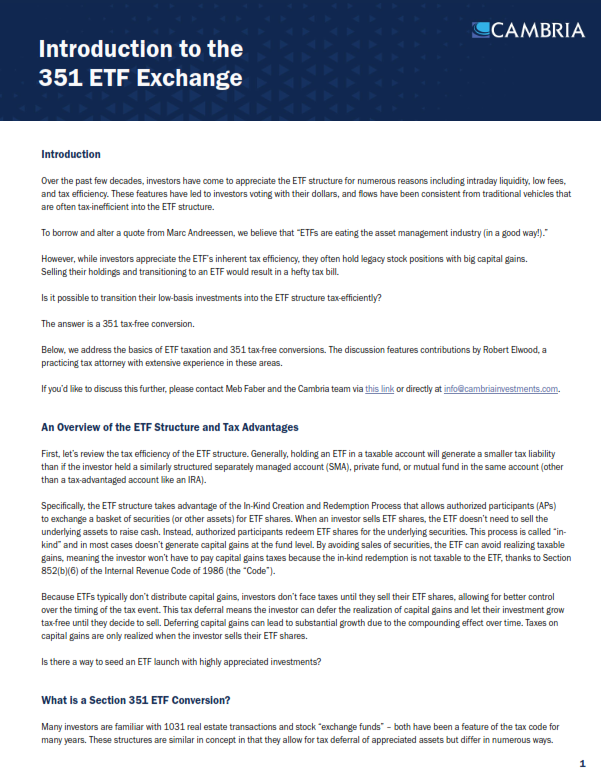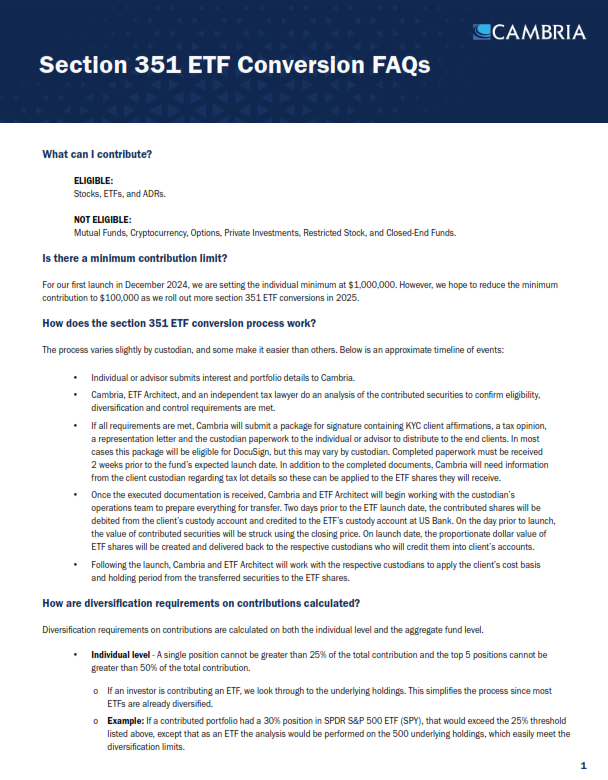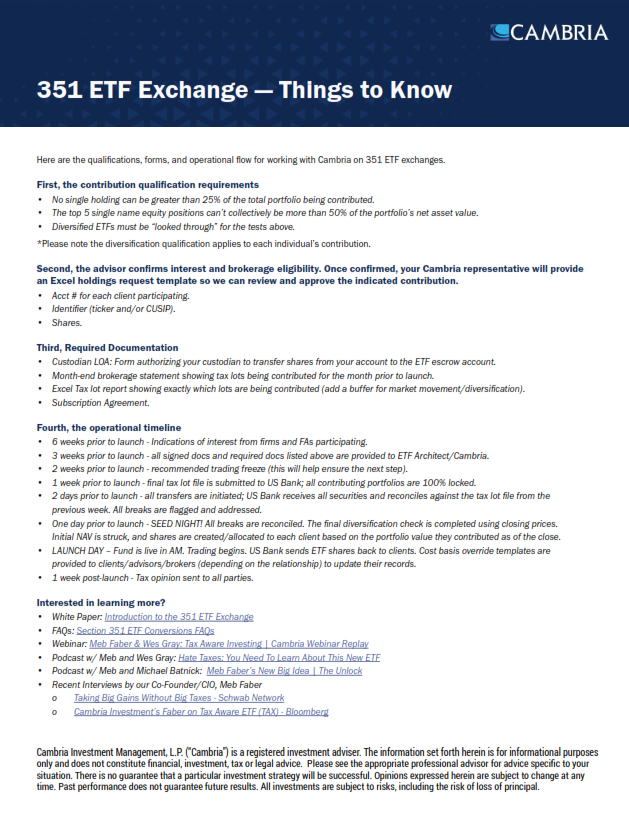Section 351 ETF Conversion
ETFs have evolved the investment landscape with notable benefits like intraday trading, lower fees, transparency, and impressive tax efficiency. But what about investors who hold legacy investment positions with significant gains? Is there a way to transition into an ETF without facing a large tax bill? There is, with a 351 ETF Exchange…A contribution of appreciated securities to a new ETF in a non-recognition transaction under Section 351 of the Internal Revenue Code (a “351 Transaction”).
How it Works
Investors contribute diversified securities to a newly formed ETF in exchange for ETF shares. These contributions are independently reviewed to ensure they meet special rules, diversification, and control requirements outlined in the Internal Revenue Code.
To cover just a few of these rules and requirements: No single holding can be greater than 25% of the total portfolio being contributed, the top 5 positions cannot make up more than 50% of the portfolio’s net asset value, and investors are considered to have ‘control’ with over 80% of the vote and value of the ETF upon its launch.
If the special rules and requirements are met, this mechanism allows the portfolio of securities to be contributed to the ETF in exchange for ETF shares without an immediate taxable event.
Because ETFs typically don’t distribute capital gains, investors don’t face taxes until they sell their ETF shares, allowing for better control over the timing of the tax event.
Resources
Introduction to the 351 ETF Exchange
Over the past few decades, investors have come to appreciate the ETF structure for numerous reasons—intraday liquidity, low fees, and tax efficiency. These features have led to investors voting with their dollars, and flows have been consistent from traditional high-fee, tax-inefficient vehicles into the ETF structure.
To borrow and alter a quote from Marc Andreessen, we believe that “ETFs are eating the asset management industry (in a good way!).”
However, while investors appreciate the ETF’s inherent tax efficiency, they often hold legacy stock positions with big capital gains. Selling their holdings and transitioning to an ETF would require a hefty tax bill.
Is it possible to transition their low-basis investments into the ETF structure tax-efficiently?
Section 351 ETF Conversion FAQs
Common questions and answers related to Section 351 ETF Conversions.
351 ETF Exchange – Things to Know
Qualifications, forms, and operational flow for working with Cambria on 351 ETF exchanges.
Interested in Participating?
Investors that wish to participate and contribute their securities to a newly formed ETF in exchange for ETF shares will have an opportunity to do so prior to the launch of upcoming Cambria ETFs.
Please reach out to 351@cambriainvestments.com to indicate interest.
Upcoming Fund Launches
Anticipated December 2025.
Cambria Investment Management, L.P. (“Cambria”) is a registered investment adviser. The information set forth herein is for informational purposes only and does not constitute financial, investment, tax or legal advice. Please see the appropriate professional advisor for advice specific to your situation. There is no guarantee that a particular investment strategy will be successful. Opinions expressed herein are subject to change at any time. Past performance does not guarantee future results. All investments are subject to risks, including the risk of loss of principal.


